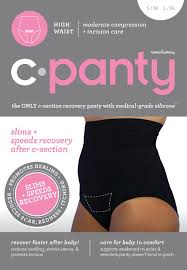 Caesarian sections are the subject of hot debate. But what do you need to know in advance, whether you’ve planned one or not?
Caesarian sections are the subject of hot debate. But what do you need to know in advance, whether you’ve planned one or not?
Our Health Editor, Radhika Holmström investigates
Nearly one in four women in the UK delivers her baby by Caesarean section but for a lot of women it’s still off-limits to discuss in advance. Most classes hardly cover sections, though they’re so widespread. In fact, a Caesarean is probably one of the most emotive procedures around. There’s still a misconception that women who opt for one – especially a planned section – dodge the experience of childbirth and are ‘too posh to push’. That’s even with guidelines from the National Institute of Health and Care Excellence that now say that you’re able to request one in advance.
Some of this stems from a feeling that what’s ‘natural’ is better when it comes to childbirth. After all, there’s also a heated debate about pain relief like epidurals, or even gas and air; and that’s not just because they may set off a spiral of intervention. Certainly, a straightforward vaginal birth (with or without pain relief) is the easiest to recover from. In practice, though, not everyone’s body ‘just knows what to do’ and babies persist in being in awkward positions, or take too long to descend the birth canal. Sometimes a C-section is the best – or only – way of bringing them out.
On the other hand, a C-section is also major surgery. It’s an operation and a hospital stay which may be straightforward, or can become complicated: however fabulous your care, there’s always the risk of an infection, or that you won’t recover as quickly as you expected. So there are definitely arguments in favour of avoiding one, if you have the choice; there’s a lot of concern, including from consultants, that some hospitals move to C-sections more quickly than they should.That choice may not be up to you – or you may decide that you’d rather know in advance that this is how you will give birth and prepare accordingly.
Electives
The proportion of ‘elective’ sections is about one in 10 births. Sometimes (not always) this is for medical reasons. It may be that, given the odds, you decide that you’re likely to end up having a section and would rather not go through a long, difficult labour with all sorts of intervention – first.
The biggest issue with an elective is timing. If possible, they’ll be done after 39 weeks to make sure that your baby’s lungs are mature enough. Babies delivered earlier than this can have breathing problems; the earlier they are, the more likely this is. On the other hand, there can be times when there’s no option: the priority is to get the baby born and into a special care unit if necessary.
How it’s done
For an elective – and if there’s time with an emergency – you’ll be in a hospital gown, your pubic hair will be shaved and nail varnish and jewellery removed. Unless you’re having a general anaesthetic or it’s extremely urgent, your partner can come in with you.
In a ‘crash’ section, the priority is to get the baby out as quickly as possible, complete with dash to the operating theatre and possibly a general anaesthetic. The procedures for others have changed quite a bit, though; with electives and also Caesarians performed because labour isn’t progressing well. They’re usually carried out under a spinal anaesthetic or epidural and good obstetricians aim to make this much gentler and more ‘natural’ than it used to be, easing baby out slowly through the incision. In some units the baby’s given straight to the mother so you can cuddle your newborn; and rather than whisking the baby away to wrap him up, he is kept warm with cling film or bubble wrap, nestled against the mother. Safety’s a priority and if there is any concern, everyone will speed up. If everything is going OK, though, it’s possible to wait till the cord stops pulsating to cut it, just as with a vaginal delivery.
Baby and your body
Babies born by C-section are much more likely to be admitted to special care. However, that is usually because of the reasons that the section was performed in the first place – not because of the way they were delivered – and that’s still a small percentage. The vast majority stay with their mothers, just like babies who were delivered vaginally.
Your own physical recovery isn’t totally predictable. Once the anaesthetic wears off you will be given intensive-strength painkillers but it’s still surprisingly hard to move around – you have, after all, had major abdominal surgery. However, it’s possible to breastfeed, although ask for advice on positions – lying down may be best, in order to take all pressure off your tummy. You’ll be up and moving within 24 hours, (even if it’s the last thing you feel like) to get your circulation going and cut the risk of a blood clot. You’ll have to stay in hospital for a few days. Sometimes, despite best efforts, your wound can get infected (though advice is to give antibiotics before the operation starts, in the hope of cutting the risk) but normally you should be back at home within the week.
When you do get back, it’s important to take things easy. Even if you feel completely well, your body is healing and it takes months for your abdominal muscles to knit together. Don’t lift anything heavier than your baby and do everything you can to keep pressure off those muscles: hold a soft pillow against you when you do anything that might strain them (even on the loo). You can sleep on your back but get up by rolling onto your side and then up as you did when you were pregnant. It’ll be a few weeks before you can drive (check with your insurer) and longer till you can swim or exercise. Do remember you’ve had a major operation and rushing things is only going to be counter-productive. If anything does start to worry you, do get advice.
The future
One concern is that a section might affect fertility or mean a vaginal birth’s off-limits in future. The latest research, studying a million women, concluded that it’s unlikely to reduce fertility though there’s a slight risk of ectopic pregnancy; there’s also a low risk that the scar will rupture in a subsequent labour. That’s why we’re encouraged to leave a couple of years between pregnancies.
On the other hand, many professionals support VBAC (vaginal birth after Caesarean) if you’ve only had one section. However, you’ll be hard-pressed to find support for a home birth and you’ll be monitored and switched to a section if things look difficult. If you don’t go into labour naturally, you may decide to go straight to a section, because induction raises your risk of the scar rupturing. But again, a lot of this is up to you – the overall advice from the Royal College of Obstetricians and Gynaecologists is that the risks remain very low in real terms, which is reassuring.
 Be prepared
Be prepared
Whether or not it’s your first choice, many of us, particularly first-timers, end up having a section. It’s as important to think as much about this option as any other birth choice you may end up making, rather than refusing to contemplate it and then being rushed into theatre without any preparation. Above all, remember that this is just one way of giving birth – because ultimately, that’s what we’re all doing!
Why you might need an elective caesarean
- Pre-eclampsia; this can affect both the mother and the baby in utero. This is characterised by high blood pressure and protein in the urine
- Gestational diabetes, which may cause your baby to grow too large in the womb
- Multiple births; though some twins are delivered vaginally
- Tokophobia; pregnancy phobia or trauma after a previous birth
- Baby in breech or bad position
- Placenta praevia; where the placenta covers some of the cervix
Why you might need an emergency caesarean
- A labour that ‘fails to progress’, where the baby isn’t moving or not moving fast enough, especially after an induction
- A baby that becomes distressed because it isn’t getting enough oxygen
- Vaginal bleeding in labour
- A baby that isn’t doing well in utero and needs getting out urgently
 Ms Zoe Penn
Ms Zoe Penn
Miss Zoe Penn MD FRCOG , Medical Director and Consultant Obstetrician at The Kensington Wing, Chelsea and Westminster Hospital, talks about your Caesarean choices
“Some women need a Caesarean because their baby is too small to tolerate labour or too big to deliver safely vaginally. Women who have babies later in life may prefer a Caesarean; chances of a successful delivery get less as you get older. If you’ve had a difficult experience during a first birth you may prefer a section rather than hours of labour with an uncertain outcome.
“Planned sections are usually done under epidural, so you’re awake and can have your partner with you. The shielding screen is lowered as your baby emerges so you can see him take his first breath. The midwife wraps him and brings him immediately to the mother or father whilst the operation is completed. It takes about an hour, there can be music playing and it’s is calm and unhurried. At Chelsea and Westminster, almost all parents report that it was a great experience.
“I believe bringing up children is all about being prepared for the unexpected. All births are different – and you’ll still love them! It is important to know a bit about Caesareans and the reasons for needing one. It’s nothing a mum has done, mostly just bad luck. A successful result is a healthy baby and mother, who have had the best experience possible.
“At Chelsea and Westminster, we respect each mother’s decision and provide a full range of options, from homebirth to consultant-led care. We have a new midwife-led Birth Centre, with a spa-like environment and with the benefits of being based in a state-of-the-art hospital. The labour ward is close to the Birth Centre if interventions are needed. We have already seen a reduction in our C-section rate.
“Anticipate and plan for needing lots of sleep and rest. After about six weeks, you should be living a pretty normal life!”
 B Says: We have found a great new product to help you after having a Caesarean.
B Says: We have found a great new product to help you after having a Caesarean.
C-Panty offers compression of the scar and cares for the scar too with its patented, medical grade silicone panel that sits over the incision area to speed healing and dramatically reduce the scar’s appearance.
It helps decrease excess fluids and shrink uterus, reduces itching and protects the incision and it can flatten and smooth the c-section incision bulge.
Available from Bloom and Beyond

 Caesarian sections are the subject of hot debate. But what do you need to know in advance, whether you’ve planned one or not?
Caesarian sections are the subject of hot debate. But what do you need to know in advance, whether you’ve planned one or not? Be prepared
Be prepared Ms Zoe Penn
Ms Zoe Penn